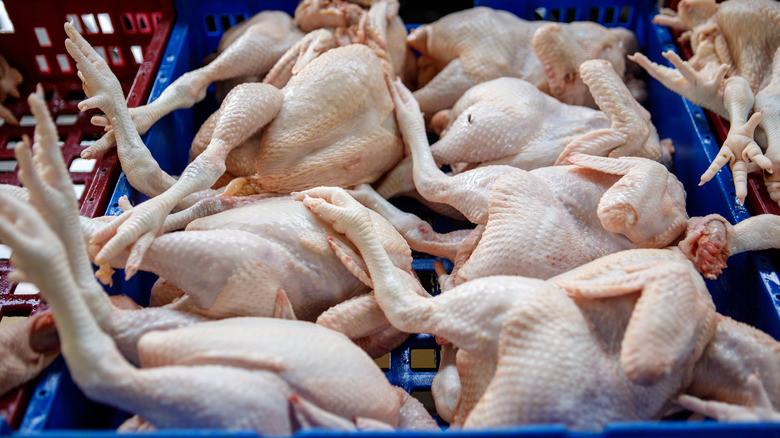How Chicken Became The Most Popular Meat In The World
There are many different ways to cook perfect chicken, but the real question these days is whether to eat this particular meat over the alternatives. While many people rave about going to steak houses and eating bacon with their breakfast each morning, the truth is that chicken is more popular now than any other meat in the world.
The chicken industry started booming a century ago, completely by accident, after Cecile Steele, a farmer living the homestead life in the early 1900s, was accidentally given 500 chicks instead of the 50 she was expecting. Since chickens were mostly raised for their eggs at the time, their meat was only consumed when the laying decreased. However, Steele quickly pivoted and was able to make a sizable profit on the meat that her 400 surviving chickens produced just a few months later.
It wasn't long before others noticed the profitability of this industry, and chicken production skyrocketed. Today, the multi-billion dollar chicken industry has grown to match consumer demands and consumption. This shift is partially related to nutrition, but it's also largely economical since it's quicker and cheaper to fatten chickens than other animals like cows and pigs. It's also a more affordable meat.
Consumers view chicken as a healthy food
There are many healthy chicken recipes that everyone loves, which has made this meat a go-to choice due to its versatility. Plus, chicken is considered (by the American Heart Association) a lean source of protein and preferable to red or processed meats. While unprocessed skinless poultry is a great choice, consumers often gravitate towards crispy, deep-fried chicken.
The 2017 documentary "Supersize Me 2: Holy Chicken!" exposed many of the marketing tactics that are used as a "health halo" to convince buyers that chicken products are healthier than they actually are. Using terms like "all-natural" and "free range" or claiming that there are no hormones added can be misleading and often doesn't mean much when you understand the guidelines.
However, this intersection of nutrition, affordability, and taste has only increased the demand for chicken. With 74 billion chickens raised and slaughtered for meat each year, many have raised concerns about climate change, the environmental impact, and the treatment of animals bred to grow at abnormally fast rates. While some speculate about a decline in meat consumption in the distant future, chicken will likely remain at the top for decades to come.

